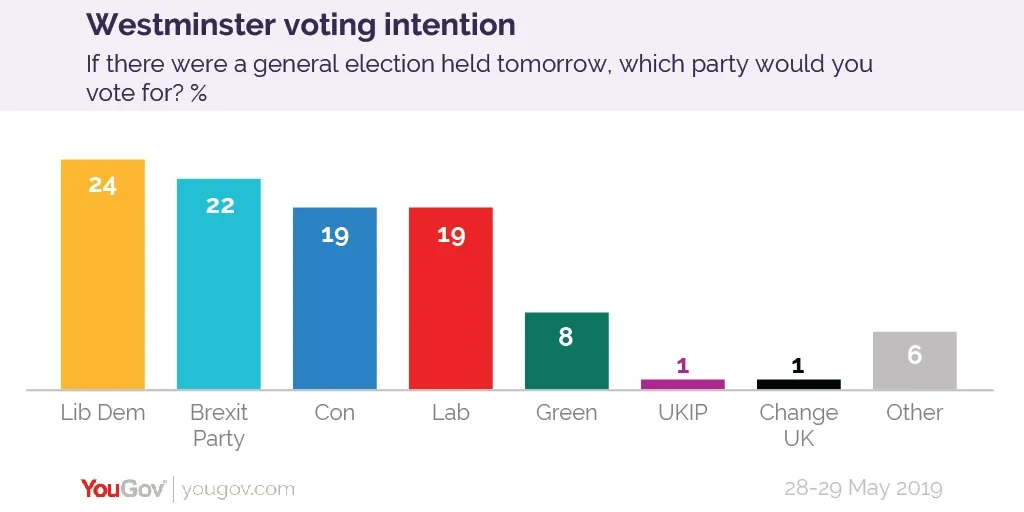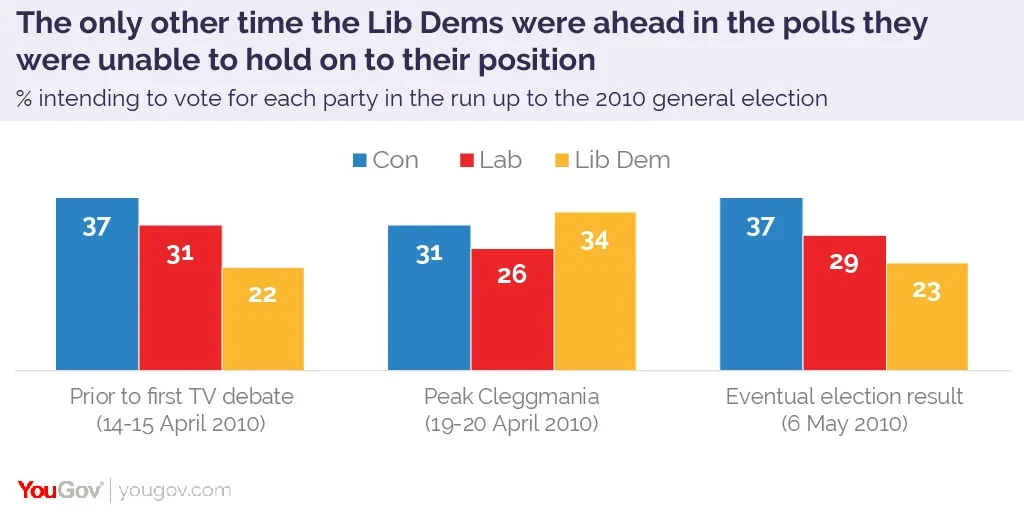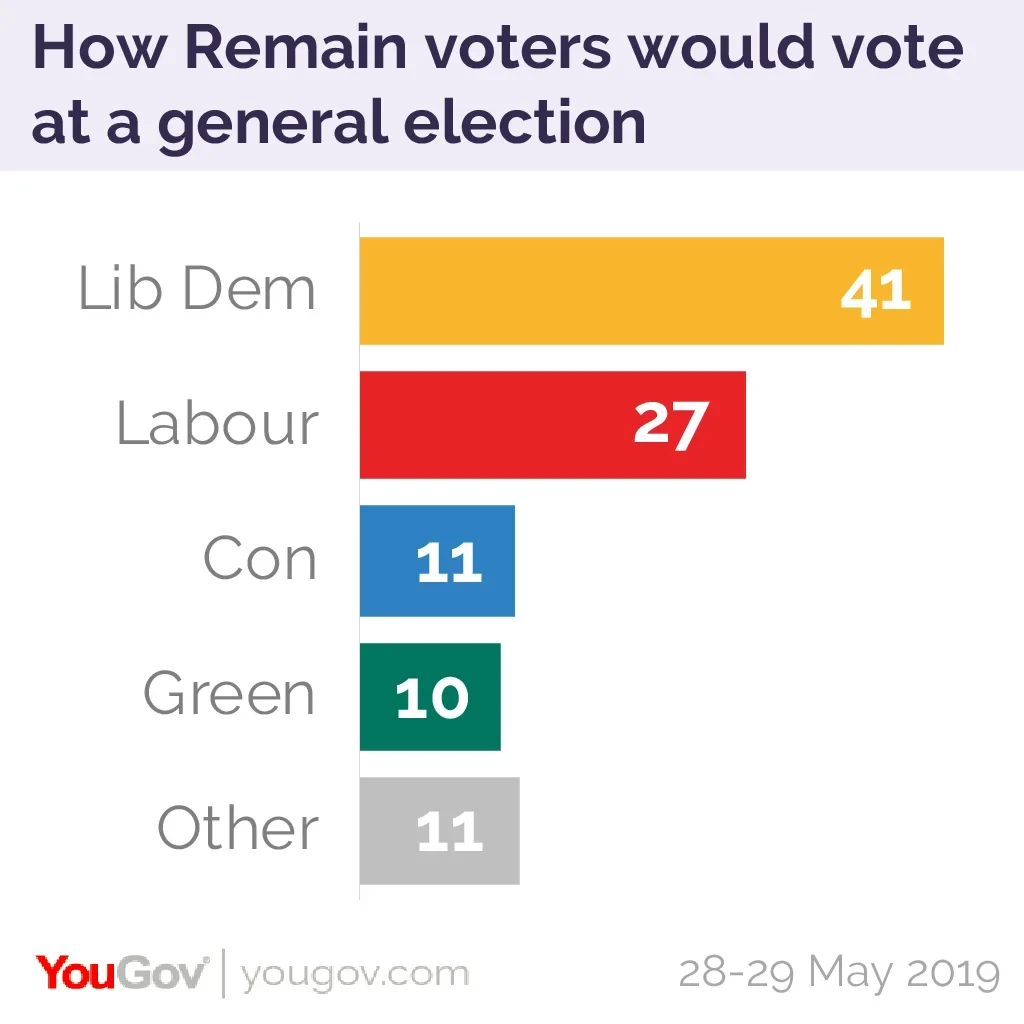The ever extending Brexit process has brought about a revival of Lib Dem fortunes
In the 19 years that YouGov has been asking the public how they would vote in general elections there have been only two occasions when neither Labour nor the Conservatives occupied the top spot. The first was in the run up to the 2010 election, after the first ever Prime Ministerial debate, when two consecutive YouGov polls showed the Liberal Democrats in first place.
The second occasion is today. After an impressive performance in last week’s European Parliament elections, our latest polling for The Times has the Liberal Democrats in first place on 24%, marginally ahead of the second-placed Brexit Party on 22% (whose ranking at any other time would have been a story in itself). Meanwhile the Conservatives and Labour are in joint third on 19%.

While taking the top spot is no mean feat for a minor party, it must nevertheless be noted that the Lib Dems are still on less than a quarter of the vote, and their lead above the other three parties is not much beyond the margin of error. There is also a question about how sustainable this is. Last week’s result may have provided them with a bounce, but these have been hard to sustain in the past, often because the other main parties have successfully managed to squeeze their vote.
For example, the Cleggmania of 2010 faded fast, with the party falling back in the final weeks of the campaign and ending up with just one percent more of the vote than they had won five years prior.

And even if their poll boost can be sustained, the Lib Dems still have to grapple with their traditional nemesis. Under the first past the post electoral system, today’s results would still likely put them behind Labour and the Conservatives in terms of seats, and probably not much ahead of the SNP (who turn their votes into seats much more efficiently because their support is regionally concentrated).
It is also worth noting that, unlike last time around, the Lib Dem surge is not driven by the presence of a popular leader. In 2010 the Lib Dem figures were dragged up on the coat-tails of Nick Clegg’s own popularity boost following his impressive performance at the prime ministerial debates. By contrast, prior to the elections Vince Cable held a net favourability rating of -18, and was less popular than his party (-15).
Brexit dragging on and Labour’s ambiguity have opened up a gap that the Lib Dems are filling
Their stance on Brexit is only now paying off for the Lib Dems. While it is a strategy the party has been pursuing since the referendum result in 2016, YouGov analysis following the 2017 general election showed that trying to be the party of “the 48%” hadn’t worked for them so far.
This is because “the 48%” didn’t really exist at that point, as a large chunk of Remainers wanted to get on with leaving the EU and most of those who still opposed Brexit were loyal to the Labour party.
Since then, Remain voters have lost their initial desire to see the will of the victors enacted, and fully two-thirds (66%) now back a second referendum. And the Liberal Democrats are clearly seen as a more significant vehicle for the forces of Remain, with twice as many people believing the Lib Dems to be an anti-Brexit party as Labour (56% vs 28%).

Likewise, Corbyn’s popularity – which had provided such a key boost for the Labour vote in 2017 – has declined substantially. Just 19% of Britons now hold a favourable view of the Labour leader compared to the seven in ten (69%) who have an unfavourable view, meaning the public now have a far worse view of him than they do of Vince Cable.
Together this has created fertile ground for the Liberal Democrats, with the result being that they are now the number one choice amongst Remain voters, on 41%, and are winning over 27% of those who voted Labour at the last election.
Photo: Getty







